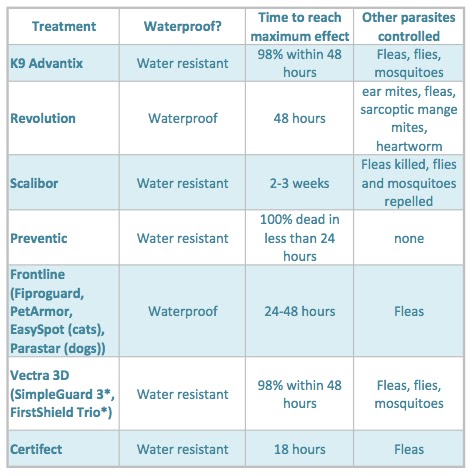What is a tick and why are they bad?
Ticks are a member of the arachnid family, a relative of spiders. There are many different species of ticks found across the country and there are a few that are known to spread disease. These are the ticks that we humans worry about the most. These hard-bodied ticks include the blacklegged or deer tick, the american dog tick, the brown dog tick, Gulf Coast tick, Rocky Mountain wood tick, Pacific Coast tick, and the lone star tick. These ticks can carry a wide array of diseases, most notably Lyme disease, rocky mountain spotted fever, anaplasmosis, and ehrlichiosis. The most common symptoms of tick-borne disease are fevers/chills, aches and pains, and sometimes a distinctive rash (a bulls-eye or spots).
 |
| "Bulls-eye" rash most commonly associated with Lyme disease. Curtesy of the CDC |
 |
| Lifecycle of a blacklegged tick |
 |
| Each black dot is a tick |
 |
| Larval stage Lone Star ticks that I pulled off of Sheila |
When your dog is infested after a hike, what do you do?
Me? I panicked. I felt like such an awful dog-mom. I made the mistake of thinking that her Trifexis protected her from ticks, so coming home Sunday evening was a harsh reality to face. We stopped by the Tractor Supply and picked up a kennel dip (17% pemethrin, interestingly enough!) and some tick shampoo that would be a bit more gentle on her sensitive skin. I gave her bath and tried to soothe her worried look. I then decided that I couldn't take chances and brought her to our local Banfield Pet Hospital inside of Petsmart. After a few suggestions of having to shave the dog, which I was adamantly against, the vet suggested we use the Preventic collar. He suggested that some studies have shown that the Preventic collar starts killing ticks within 48 hours which would help minimize any risk of disease transmission. At $18.99 this was the option for us! We also opted to have her vaccinated against Lyme and put on a cycle of doxicylin to further protect against infection.
A note about the dose of doxi… we found out later through Tick Encounter Resource from the University of Rhode Island, that larval Lone Star ticks do not transmit disease, though nymph stage ticks may transmit disease. This was mainly a preventative measure because I am a worrier.
The Preventic collar did seem to kill all of her ticks within about 48-72 hours, though it left the ticks dead bodies attached to her which fell off easily after a good brushing. After reading more about the different tick preventatives, we decided that Preventic isn't our best bet while actually hiking the trail.
Types of tick preventative
There are so many types of tick preventative out there, it can be a little overwhelming. Thankfully, a few sites out there have done all of the hard work and summed up each product including active ingredient, application type and even what treatments are effective against which ticks!
 |
| Information gathered from marvistavet.com |
 | |
|
The answer to this varies, as no two dogs are the same. For us, topical treatments do not work well due to the nature of Sheila's thick coat. We are personally going to be using a Seresto collar, which isn't listed above. This collar's main ingredients are imidacloprid and flumethrin, it's safe for dogs and cats, it lasts 8 months, it is water resistant, reaches 97% effectiveness in 48 hours against deer and lone star ticks, and is also effective against fleas. It is a relatively expensive collar. We were quoted around $50 from a local vet.
We are mainly interested in this collar because of the 8 month effectiveness, that way we can put it on her early and keep it on well after the hike. I was leaning toward the Scalibor collar, but it doesn't seem to be offered in the states anymore.
A week and a half later, Sheila is happy and healthy with no symptoms of tick-borne illness. Our little incident really opened up my eyes to the dangers of ticks on the trail. I just hope that our good luck will continue as we set out on the AT early next year!
I hope this is helpful to anyone looking for this sort of information. If you have questions or comments, please feel free to submit them below! Thanks for reading!
No comments:
Post a Comment